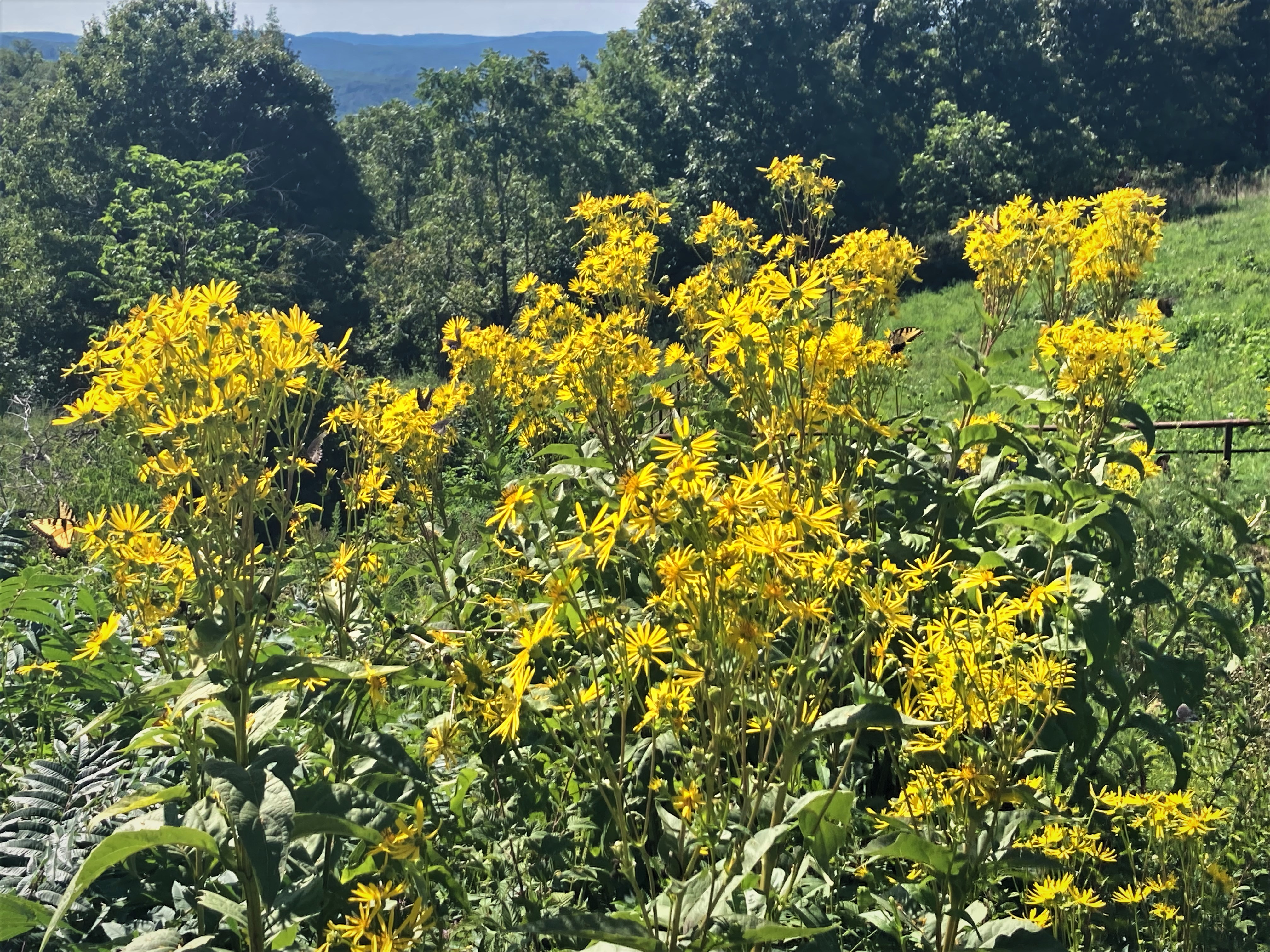Yellow Wildflowers Dominate in the Fall
Contact
University of Arkansas System Division of Agriculture
Cooperative Extension Service
2301 S. University Ave.
Little Rock, AR 72204

Yellow Wildflowers Dominate in the Fall
One had better learn to like yellow wildflowers if you are on the prowl on Arkansas backroads in the fall. They are everywhere. Standing in large patches along the roadway or sometimes painting whole pastures with their cheery patches of yellow. Why all these yellow flowers?

While my windshield observations are completely unscientific, I would guess that about 80 percent of the wildflowers seen blooming along Arkansas roadways in the fall have yellow flowers. Sure, there are a few white blooming plants, and a few purples, but mostly they are yellow. Why all this yellow? As with most things we see in nature, the answer is complicated.
If you record the late summer and fall blooming species with yellow flowers – and there are more than a dozen widely distributed species – it is quickly apparent they are all in the daisy (Aster or composite) family. The daisy family has a wide spectrum of flower colors but yellow is the go-to color for most species. White, blue and orange are somewhat common but red is largely absent.
Among the most common fall composites are the Helianthus (sunflowers such as bristly, woodland, downy, sawtooth, annual, narrowleaf), Silphium (rosinweed, cup plant, prairie dock, compass plant), Rudbeckia (black-eyed Susans such as cutleaf, sweet coneflower), Bidens (tickseed sunflower) and Solidago (goldenrods such as tall, Canadian, showy, stiff, blue-stem, old field, woodland, and many others). The least amongst these plants will be three feet tall while some may grow to six or eight feet in height. They often occur in dense stands.
The aster family is mostly dominated by species that evolved to survive in open, sunny, often dry climates. The same kind of climate favored by grasses. Fossil records indicate that the daisy family appeared about the same time as the grasses; about the time dinosaurs went extinct. Many of the members of this enormous family coevolved with grasses in a prairie or savannah type habitat and are large, vigorous plants that are as tall as or taller than the surrounding grasses.
To attain this size, many of the members of the aster family in northern (or southern) temperate climates initiate flowers as the length of the days begin to get shorter after the summer solstice. Before that, they are making vegetative growth and attaining sufficient size to stay ahead of the grasses. These “short day plants” often require a couple months for flower buds to form after bud initiation is triggered in early July. In a typical year, yellow flowered members of the aster family dominate the roadsides from late-August through mid-October.
But why are members of the daisy family mostly yellow? The aster family, unlike grasses that adopted wind pollination, chose insect pollination. The human eye has three main types of color receptors in the eye; red, green and blue. We miss everything outside of the visible spectrum, which includes a lot of bandwidth. Bees have three types of photoreceptors but in their case, they are ultraviolet, blue and green. Butterflies have at least six light sensing cells, ranging from the ultraviolet to blue, green, red and into the near-red broadband spectrum.
When these yellow flowers are photographed with ultraviolet filters you see completely different color patterns. To us the ray petal of a sunflower looks uniformly yellow, but when seen as an insect would see it, they have a bullseye pattern with the basal end of the petal often highly saturated with violet shading. I could find no images of goldenrod flowers taken in the ultraviolet spectrum but I suspect they too look different to the insect eye.
Goldenrods begin blooming in mid-summer and, rotating through the more than 30 species found in the state, bloom until frost. They are often blamed for causing hay fever, but because they are insect pollinated with heavy, sticky pollen grains, they are innocent victims of prejudice. Ragweed, another member of the daisy family but one that evolved with wind pollination, is the culprit. It too is fall blooming, with its flowering time coinciding with the peak goldenrod season.
All of these fall blooming members of the aster family have an important role in the health of our ecosystem. Most of them produce oily seeds in great abundance. These are favorites of all the birds, especially those migrating through the region on their way south for the winter.